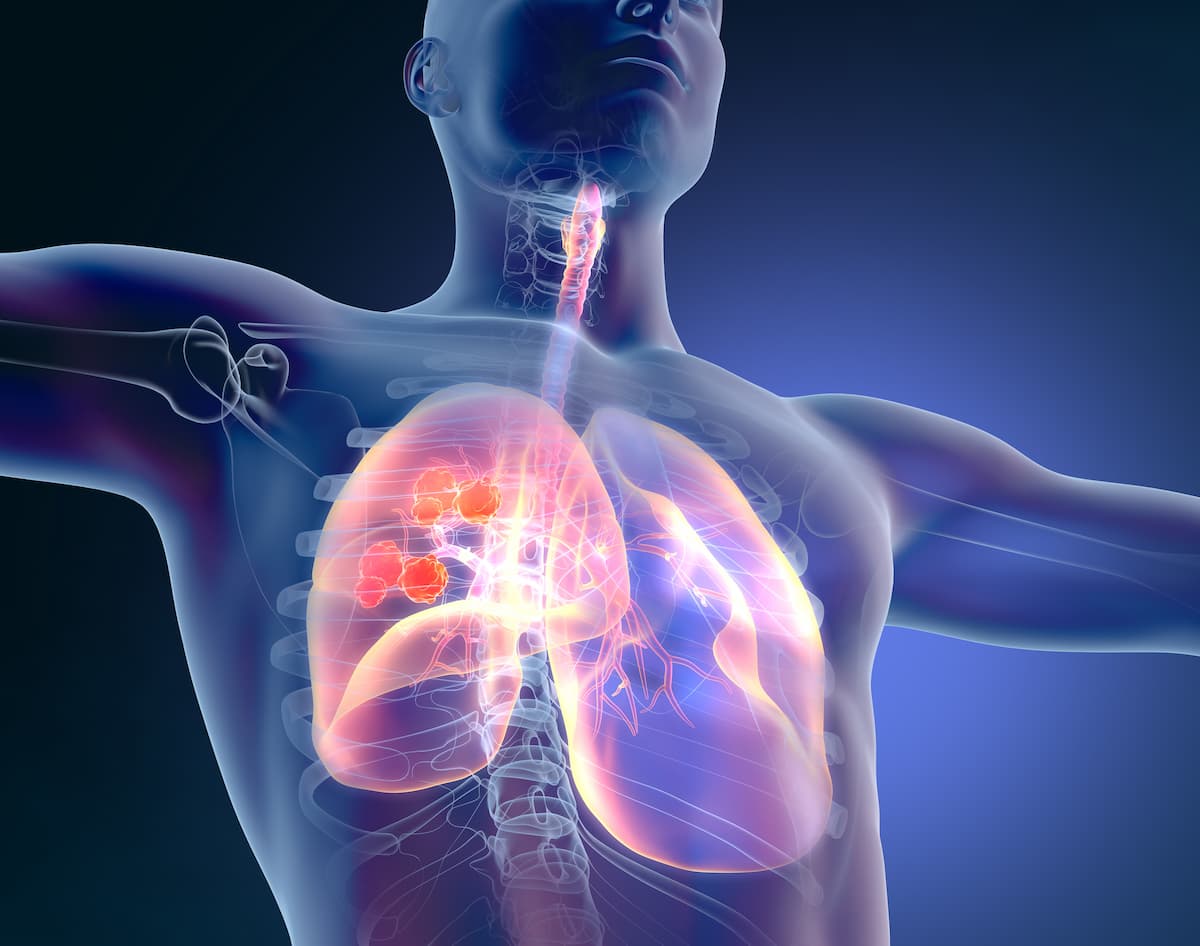Camrelizumab/Apatinib Plus Chemotherapy May Show Promise in ES-SCLC
The safety profile of camrelizumab plus apatinib and chemotherapy in a phase 1 study aligns with prior reports of each agent.
"Induction [etoposide and carboplatin] followed by a combination of camrelizumab, apatinib, and [etoposide and carboplatin] and subsequent maintenance camrelizumab plus apatinib showed tolerable safety and promising antitumor activity, suggesting its potential as a first-line therapy option for patients with ES-SCLC," according to the study authors.

Combining camrelizumab and apatinib with chemotherapy as frontline treatment demonstrated promising activity in a small cohort of patients with extensive-stage small cell lung cancer (ES-SCLC), according to findings from a phase 1 study (NCT05001412) published in Signal Transduction and Targeted Therapy.1
Among the patients who received 2 cycles of induction chemotherapy, the objective response rate (ORR) was 66.7% (95% CI, 49.0%-81.4%) and the disease control rate (DCR) was 97.2% (95% CI, 85.5%-100.0%). Partial responses (PRs) occurred in 66.7% of patients, and 30.6% experienced stable disease.
After patients received all components of study treatment, the ORR was 88.9% (95% CI, 73.9%-96.9%) and the DCR was 97.2% (95% CI, 85.5%-100.0%). Additionally, 88.9% and 8.3% experienced PRs and stable disease, respectively.
A decrease in tumor size of target lesions from baseline occurred in 94.4% of patients at a median best change of –63.3% from baseline. Treatment yielded a median duration of response (DOR) of 5.4 months (95% CI, 4.2-7.7) and a median time to response of 1.5 months.
With a median follow-up of 20.6 months, data showed a median progression-free survival (PFS) of 7.3 months (95% CI, 6.6-9.2) and a median overall survival (OS) of 17.3 months (95% CI, 11.8-not reached). At 12 months, the OS rate was 63.4% (95% CI, 45.4%-76.9%).
“As far as we are aware, this is the first report to investigate the safety, antitumor response, and potential biomarkers of PD-1 inhibitors plus anti-VEGFR agents and chemotherapy in [patients with] ES-SCLC,” lead study author Ming Liu, from the State Key Laboratory of Respiratory Disease, National Clinical Research Center for Respiratory Disease, National Center for Respiratory Medicine, Department of Pulmonary and Critical Care Medicine, and Guangzhou Institute of Respiratory Health at The First Affiliated Hospital of Guangzhou Medical University in China, wrote with coauthors.1 “Induction [etoposide and carboplatin] followed by a combination of camrelizumab, apatinib, and [etoposide and carboplatin] and subsequent maintenance camrelizumab plus apatinib showed tolerable safety and promising antitumor activity, suggesting its potential as a first-line therapy option for patients with ES-SCLC.”
In this multicenter, single-arm study, 40 patients were assigned to receive induction etoposide at 100 mg/m2 intravenously on days 1 to 3 plus carboplatin area under the curve 5 mg/mL/min intravenously on day 1 for 2 cycles. This was followed by camrelizumab at 200 mg intravenously on day 1, apatinib at 250 mg orally daily, etoposide at 100 mg/m2 intravenously on days 1 to 3, and carboplatin area under the curve 5 mg/mL/min intravenously on day 1. Additionally, maintenance therapy consisted of camrelizumab at 200 mg intravenously on day 1 and apatinib at 250 mg orally once daily until progressive disease, intolerable toxicity, death, or withdrawal of consent.
The study’s primary end point was safety. Secondary end points included ORR, DCR, DOR, time to response, PFS, and OS.
Patients aged 18 to 75 years with ES-SCLC confirmed via pathology and no prior systematic treatment were eligible for enrollment in the study.2 Other eligibility criteria included having measurable lesions per RECIST v1.1 guidelines, an ECOG performance status of 0 or 1, appropriate organ function, and a life expectancy of more than 12 weeks.
The median patient age was 60 years (range, 40-73), and most patients were men (90%). Additionally, most of the study population had an ECOG performance status of 1 (77.5%), current or former smoking status (95.0%), central anatomical disease (82.5%), grade 3 vascular invasion (72.5%), no brain metastases (85.0%), and no liver metastases (82.5%).
Exploratory analyses revealed that RB1 mutations correlated with longer PFS (P < .001; HR, 0.10; 95% CI, 0.02-0.45) and mutations in mTOR signaling pathway genes correlated with worse PFS (P = .005; HR, 3.97; 95% CI, 1.43-11.06). Additionally, high tumor mutational burden was associated with prolonged PFS (P = .008; HR, 0.26; 95% CI, 0.09-0.74) whereas high homologous recombination deficiency scores trended toward longer PFS (P = .07; HR, 0.40; 95% CI, 0.15-1.12).
All patients (100%) experienced any-grade treatment-emergent adverse effects (TEAEs) during all stages of treatment, with the most common including leukopenia (77.5%), anemia (70.0%), and neutropenia (62.5%). Grade 3/4 TEAEs affected 75.0% of patients and consisted of neutropenia (35.0%), anemia (15.0%), and elevated alanine aminotransferase (15.0%).
Overall, 11.4% and 5.7% of patients experienced toxicity leading to the discontinuation of camrelizumab and apatinib, respectively. No toxicity resulted in the discontinuation of chemotherapy.
References
- Liu M, Qiu G, Guan W, et al. Induction chemotherapy followed by camrelizumab plus apatinib and chemotherapy as first-line treatment for extensive-stage small-cell lung cancer: a multicenter, single-arm trial. Signal Transduct Target Ther. 2025;10(1):65. doi:10.1038/s41392-025-02153-7
- Chemotherapy combined with camrelizumab and apatinib in first-line treatment of ES-SCLC. ClinicalTrials.gov. Updated August 12, 2021. Accessed May 16, 2025. https://tinyurl.com/muw8z7jt